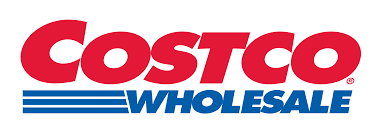Business Strategy
Costco's Five Forces
Costco Wholesale faces external factors with varying intensities. These change over time. Currently, Costco has the following five forces:
- Competitive rivalry or competition (strong force)
- Bargaining power of buyers or customers (strong force)
- Bargaining power of suppliers (weak force)
- Threat of substitutes or substitution (moderate force)
- Threat of new entrants or new entry (moderate force)
Competitive rivalry or competition:
Costco has plenty of formidable competitors in Walmart and its affiliated warehouse membership club, Sam's Club. Amazon and Target are also very large competitors. The high variety of firms makes the competition tougher, as firms capitalize on their unique competencies to compete against Costco. Also, low switching costs are an external factor that makes it easy for consumers to go from Costco to another competitor. This shows how competitive rivalry or competition is such a strong force.
Bargaining power of buyers or customers:
Costco must ensure they provide the best experience and prices to satisfy its customers. This element of the five forces is crucial. This is because the customers influence on the industry. Customers can cause a large influx on a company at any time and this can impact Costco negatively. External factors such as low switching costs and high availability of substitutes can cause a strong bargaining power amongst customers. Low switching costs meant that Costco's customers could easily transfer to other retailers, like Sam's Club. Also, their customers have many substitutes to choose from.
Bargaining power of suppliers:
Suppliers affect Costco's business and the entire retail industry, but Costco's large size and buying power allow it to negotiate lower prices and better terms with its suppliers. The company also tends to establish long-term relationships with its suppliers, which further strengthens its bargaining power. Also, Costco has developed a reputation for high-quality products, which makes it an ideal partner for suppliers.
Threat of substitutes or substitutions:
The threat of substitutes in the warehouse club industry, where Costco operates, is moderate. While there are many different retailers that customers can choose from, there are a few who compare to Costco's high-quality, low price characteristics. To mitigate the threat of substitutes, Costco focuses on offering a wide range of products at low prices and emphasized the value of its membership mode. The company also invests heavily in customer service, which can help to build customer loyalty. While the threat of substitutes is moderate Costco sticks to its low prices, investing in customer service, and their membership model to help reduce this threat.
Threat of new entrants or new entry:
The Club Warehouse Industry as it stands is highly competitive and the rivalry amongst competitors is high. Costco faces competition from other warehouse club retailers such as Sam's Club and BJ's, as well as traditional retailers and online retailers. Competitors in the industry compete on factors such as price, product selection, and customer service. Even though there still is a threat to new entrants in the market these wholesalers are very established in the market.
Competitive Strategy - Cost Leadership
Cost leadership is Costco's general competitive strategy. This general approach involves low expenses, which are usually translated into low selling prices. When customers shop at the company's locations, they anticipate huge savings. However, the basic competitive approach of cost leadership is also employed by other large-scale companies. As a secondary generic strategy, Costco uses broad differentiation in part to set itself apart from its competitors. Based on certain traits, this secondary generic strategy distinguishes the warehouse club industry. For example, Costco has set itself apart with its brand "Kirkland Signature." Costco can compete with its cheap prices and high quality, which are its main selling points based on the general cost leadership strategy.
Value Chain and Business Process
The first crucial step in value chain analysis is to deconstruct the company's main goals. Determine whether any activity has to be improved in order to get a cost or differentiation advantage. It's important to determine the strategies the company will require to perform well. How successfully the business manages value chain operations like pricing will determine how successful it is. The operations in the value chain begin with production and conclude with marketing and post-marketing surveillance. Thus, the value chain analysis places a strong emphasis on keeping a watch on everything from marketing to production.
How do the information systems support the strategy?
Again, Costco's business strategy relies heavily on cost leadership, a focus on providing value to its members, and efficient operation. Their information systems are important in carrying out this approach. Firstly, they must monitor the inventory levels, guaranteeing the ability to restock and negotiate with suppliers. These solutions help streamline the supply chain management process. Because of these processes, Costco can keep its inventory low, save money on storage, and provide its consumers with the best prices.
To understand consumer behavior and industry trends, Costco uses data analytics using its information systems. Using this data it allows Costco to make the best decisions about products, promotions, and marketing. This data-driven strategy improves consumers happiness and loyalty to the store. Costco's strong information systems allow them to stay ahead of the competition and generate a great reputation.



